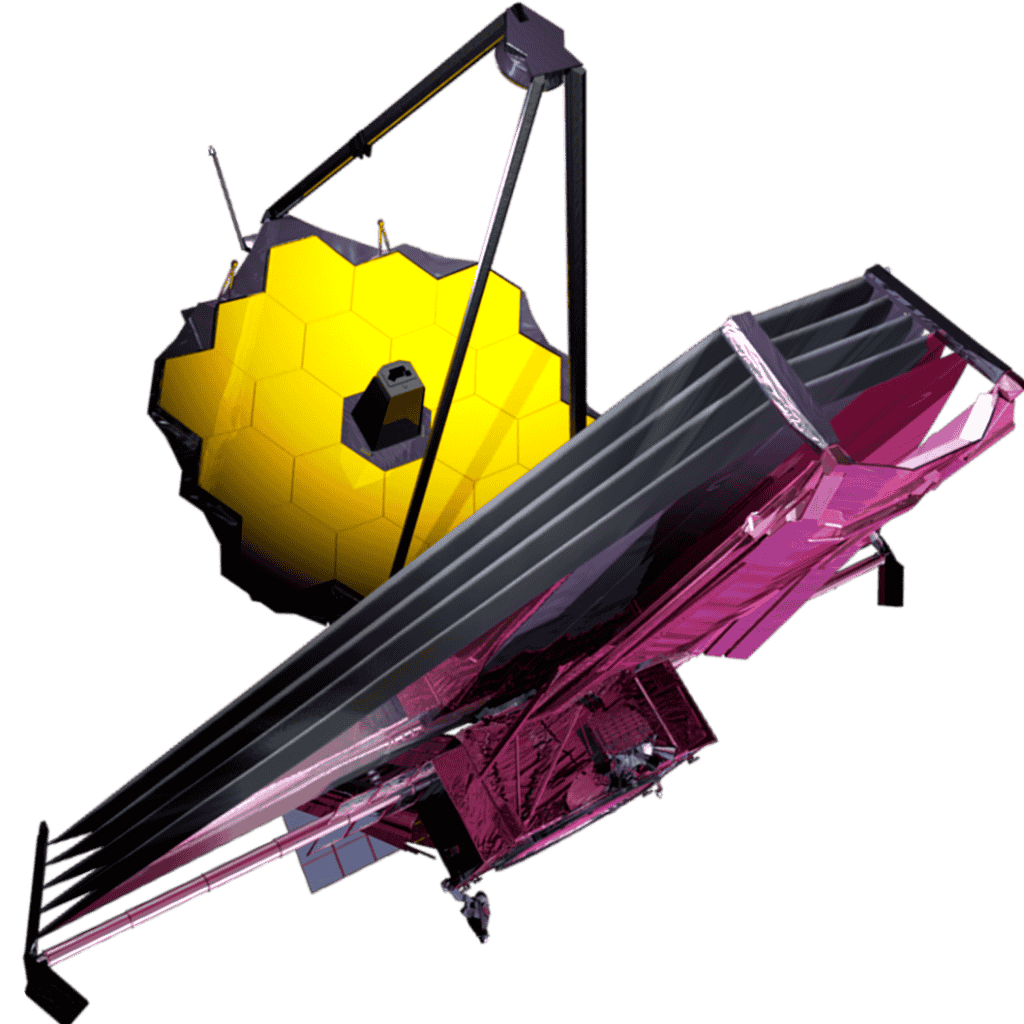The James Webb Space Telescope (JWST) is the world’s most powerful and advanced infrared observatory, launched in December 2021 by NASA, ESA, and CSA. JWST orbits the Sun at the L2 Lagrange Point, 1.5 million kilometers from Earth, providing a stable, cold environment essential for sensitive infrared observations. Its 6.5-meter gold-coated segmented mirror is over 2.5 times larger than Hubble’s, enabling JWST to collect faint light from the earliest galaxies and distant exoplanets.
JWST’s four state-of-the-art instruments—NIRCam, NIRSpec, MIRI, and FGS/NIRISS—allow astronomers to study the universe’s first stars and galaxies, the formation of planetary systems, and the atmospheres of exoplanets. Its advanced sunshield blocks solar radiation, keeping instruments at cryogenic temperatures below -223°C, crucial for detecting infrared signals.
Key Discoveries and Scientific Impact
- Cosmic Origins: JWST observes galaxies formed just 200 million years after the Big Bang, shedding light on cosmic reionization and galaxy evolution.
- Exoplanet Atmospheres: The telescope analyzes the chemical composition of exoplanet atmospheres, detecting water, methane, and carbon dioxide, and searching for signs of habitability.
- Star and Planet Formation: JWST images stellar nurseries like the Pillars of Creation, revealing how stars and planets form in dust clouds.
- Dark Matter and Cosmic Structure: Recent images of the Bullet Cluster and Cat’s Paw Nebula advance our understanding of dark matter and star formation processes.
Technological Innovations
- Foldable mirror and sunshield for compact launch and large deployment
- Precision alignment and wavefront sensing for sharp imaging
- Synergy with Hubble, Roman, and ground-based telescopes for multi-wavelength studies
